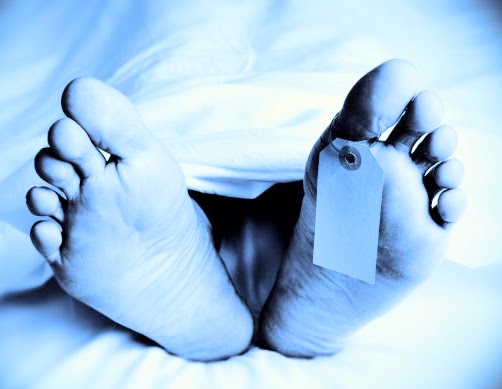 The slippery slope argument is rightly regarded a logical fallacy, but a prediction based on sound reasoning is far from irrational. As if to prove the accuracy of predictions once widely dismissed as slippery slope fallacies, the Belgian Senate Committee has voted 13 to 4 in favour of allowing euthanasia for those with early dementia and for sick and disabled children. This means that the matter proceeds to the Belgian parliament for debate.
The slippery slope argument is rightly regarded a logical fallacy, but a prediction based on sound reasoning is far from irrational. As if to prove the accuracy of predictions once widely dismissed as slippery slope fallacies, the Belgian Senate Committee has voted 13 to 4 in favour of allowing euthanasia for those with early dementia and for sick and disabled children. This means that the matter proceeds to the Belgian parliament for debate.
When euthanasia was legalised many of us warned that what started as a right would soon become a duty particularly for those who are unproductive. This is because the logic of voluntary euthanasia is predicated on the the idea that some lives are of such low quality and so ‘disutilitous’ as to be worthy of elimination. Medical euthanasia is not, after all, intended for just anyone who asks for it. This very idea exists in stark contrast to the equal dignity principle which insists that all human beings have an intrinsic dignity in virtue of being part of humanity. The principle is enshrined in the Universal Declaration of Human Rights and the European Convention on Human Rights and in much international law.
That there are radical demographic alterations in Europe is undeniable. A collapse in the birthrates over a period of decades has necessitated and invited population replacement with all the cultural change that that introduces. It has also led to an increasing ageing population many of whom will suffer dementia. In short, the implications of decades of low fertility are now apparent. The ageing population is growing not just because of advances in medicine but because boomers did not replace themselves in the usual reproductive way. Into this complex of factors, euthanasia has emerged as a controversial variable.
It is widely acknowledged that voluntary euthanasia is uncontrolled in Belgium. Not only are euthanasia deaths in Belgium escalating at a remarkable rate with increases of 25% in 2012 alone, the British Medical Journal reports that 47% of all assisted deaths are not being reported, suggesting substantial loss of control over the procedure. 32% of all assisted deaths are performed without request. The lethal procedure far from being accompanied by professional gravitas, is performed informally with nurses too feeling themselves free to kill their patients, despite the law restricting euthanasia to doctors. Interestingly, 97.7% of reported cases were performed by a doctor, whereas 41.3% of the unreported cases were done by a nurse alone. Again it should be emphasised, this is illegal in Belgium. These results appear to confirm another recent study that found that 45% of euthanasia deaths that were performed by nurses were without request or consent.
Unsurprisingly then for those familiar with the logic of euthanasia, some are now seeking to extend active euthanasia both to those with dementia and disabled and sick children. Any thought that the Belgian socialists might fight these initiatives so threatening to the vulnerable in austerity-hit hospitals, should think again. It was they that introduced the proposals for reform.
The UK has seen its own exposé, albeit only in respect of passive euthanasia. Active euthanasia (by lethal injection or assisted suicide) remains illegal. In 2008 the Liverpool Care Pathway, a sedation-dehydration scheme popular with medics who have used it, was financially incentivised in hospitals, hospices and care homes. This strategy meant that institutions won millions of pounds for rolling out the programme ensuring high proportions of Pathway deaths. This seemed expedient enough to all but a few naysayers. Certain medical professionals warned that the procedure had a self-fulfilling quality in that death could not always be diagnosed with certainty. I counselled that political, financial and medical interests in killing people by sedation dehydration regimes would invite homicide. I had all but given up on the facts ever coming to light. The whole thing appeared to be moving forward swiftly for the euthanasiasts until, thanks to a little journalistic initiative, Freedom of Information Act requests performed by one enterprising journalist, revealed a dramatic increase in the use of sedation and dehydration techniques after 2008 when the national strategy was implemented. The bureaucratisation of the procedure, so that healthcare professionals not achieving sufficiently high Pathway targets were identified as failing members of staff, had apparently worked like a dream. All this was exposed in 2012 even though many grieving families and medical and legal professionals had been warning of it for years. The Neuberger Review commissioned into the self fulfilling ‘death pathway’, as it has come to be known, acknowledged the scandal in hospices, hospitals and care homes nationally and the Pathway has been abolished.
A matter consistently forgotten by liberals but uppermost in more pragmatic minds are the political, financial, medical and research interests that there are in eliminating costly unproductives. Where human life itself is concerned, the will to freedom swiftly degenerates into the will to power and the the will to profit. Where, in an age of austerity, there are limits on financial resources and a growing ageing population, legalising active euthanasia for dementia patients and sick children introduces the very real prospect of systematised killing for political and other ends. Although marketed as freedom enhancing it is no such thing, attended, as it will be, by death propaganda and motivated by greater political ends. In this way ‘personal autonomy’ is a mere front for other politically desirable ends which in reality drive the political machine.
In 1936 Britain warded off efforts to legalise euthanasia just prior to a devastating genocide in European history. Politics, social cost, social improvement, good genes, utility, race, intelligence, sexuality and a raft other reasons were cited to kickstart the genocidal engine. These reasons did indeed motivate the homicide. Children’s euthanasia and experiments on the disabled and young were often performed precisely with the consent of parents. Before long, those held in detention camps became ripe for elimination. And what started out as voluntary soon degenerated into non-voluntary and involuntary euthanasia.
The annual effort to implement state sanctioned medical homicide in the UK is upon us. The ineradicable Charlie (Lord) Falconer has been wheeled out yet again to present his noxious case. Across the Channel we have the spectacle of Belgium moving ineluctably towards active euthanasia for dementia patients and sick children notwithstanding its continuing experience of uncontrolled and unreported euthanasia. It is time to retain a robust realism about the political ends that motivate the drive to use the lethal injection on the most vulnerable members of society. The horror of what is happening is visible to all with eyes to see.







Comments